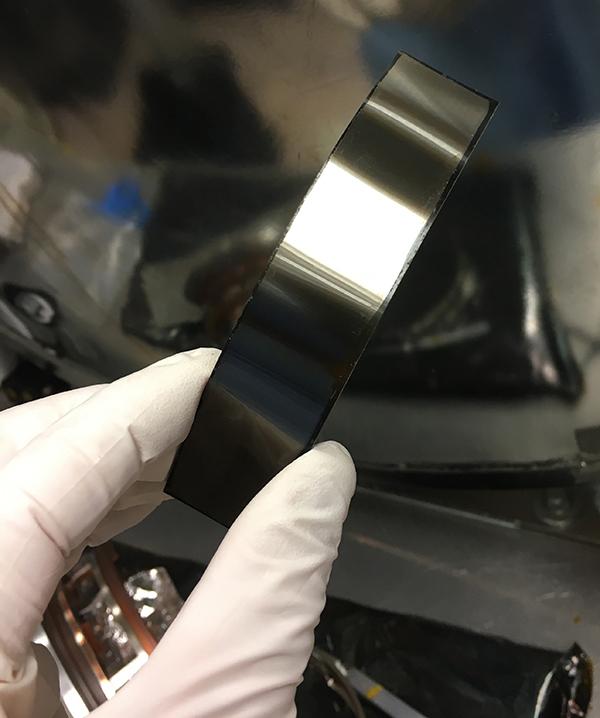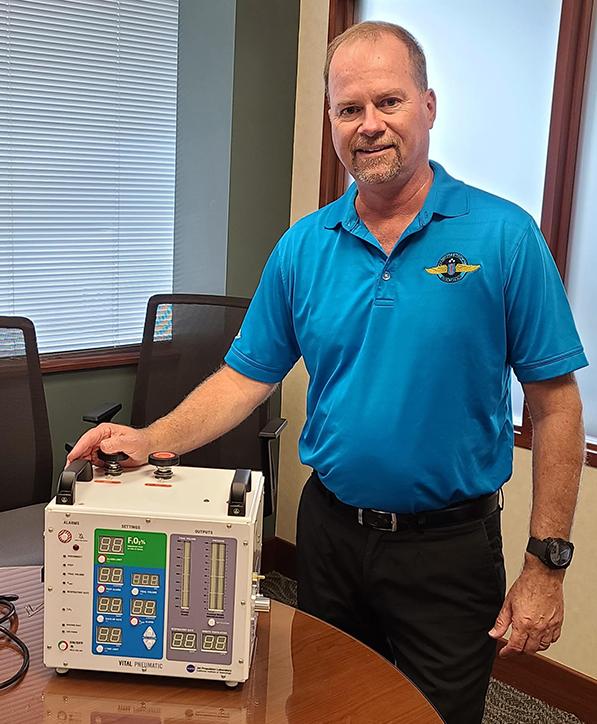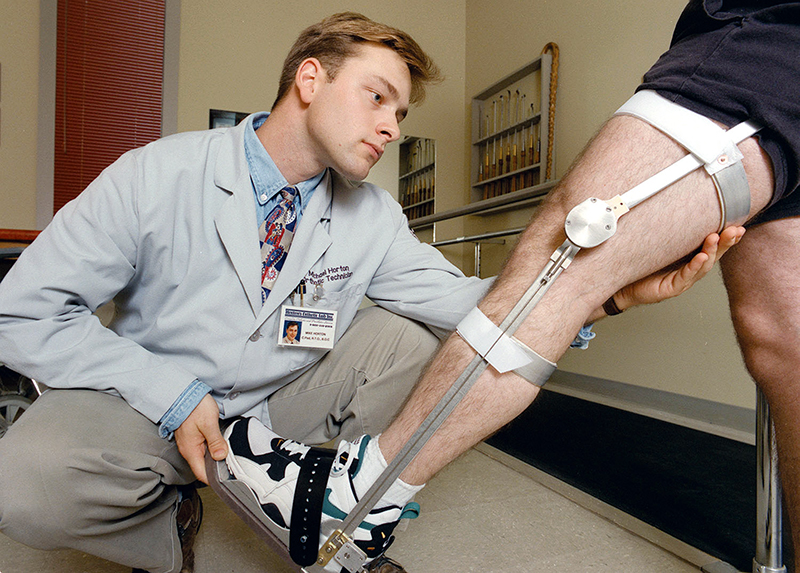
Lockable Knee Brace Speeds Rehabilitation
Originating Technology/NASA Contribution
Marshall Space Flight Center develops key transportation and propulsion technologies for the Space Agency. The Center manages propulsion hardware and technologies of the space shuttle, develops the next generation of space transportation and propulsion systems, oversees science and hardware development for the International Space Station, manages projects and studies that will help pave the way back to the Moon, and handles a variety of associated scientific endeavors to benefit space exploration and improve life here on Earth.
It is a large and diversified center, andto a great wealth of design skill. Some of the same mechanical design skill that made its way into the plans for rocket engines and advanced propulsion at this Alabama-based NASA center also worked its way into the design of an orthotic knee joint that is changing the lives of people with weakened quadriceps.
Partnership
Gary Horton, owner and operator of Horton’s Orthotic Lab Inc., in Little Rock, Arkansas, was visiting Marshall on unrelated business, when he unexpectedly received assistance with a knee brace he was designing.
He was attending a meeting at the Center, where, once the engineers learned he was an orthotist, they shared with him plans for several newly designed knee joints.
The particular design that caught his eye was one by Marshall employee, Neil Meyers, a mechanical engineer, who had developed a lockable joint with a hinge brake.
Horton licensed the technology from Marshall and then set about applying the design concept to a new type of orthotic, a knee that automatically unlocks during the swinging phase of walking, but then is able to reengage for stability upon heel strike.
Product Outcome
Horton left Marshall with the basic design of the lockable knee joint, but still needed several years of design, development, and testing before bringing the medical device to the market.
Horton contacted Arkansas Manufacturing Solutions (AMS), operating at the time as the Arkansas Manufacturing Extension Network, a program of the Arkansas Science and Technology Authority. AMS has been instrumental in helping hundreds of Arkansas manufacturers increase sales and profits by cutting costs and improving manufacturing processes by providing technical and management assistance that improves the quality, productivity, and global competitiveness of state businesses. Through AMS, Horton was connected with Professor John Hebard, of the University of Arkansas at Little Rock, who helped the orthotist overcome additional design obstacles.
In total, Horton spent 7 years perfecting the design of the knee joint. The result was the Stance Control Orthotic Knee Joint (SCOKJ). Designed for patients with weak or absent quadriceps and varying degrees of knee instability, it is ideal for people with weak quadricep muscles due to polio, spinal cord injuries, and other conditions; such as unilateral leg paralysis. The lightweight orthosis allows patients to regain their mobility and assist them in more energy-efficient ambulation.
Much like the human knee, the selectively lockable joint operates in three distinct but complementary modes: free motion or automatic stance control, for walking, and manual lock, for standing. The device locks the knee when the heel strikes, but then releases when the heel lifts off the ground, which provides the user with a normal gait, while also providing stability while standing. The stance control feature can be triggered by weight bearing or joint motion, according to patient needs.
The SCOKJ entered the commercial realm in 2002 as a very durable option for knee orthotics and has since helped thousands of people.
Stance Control Orthotic Knee™ is a trademark, and SCOKJ® is a registered trademark of Horton Technology Inc.
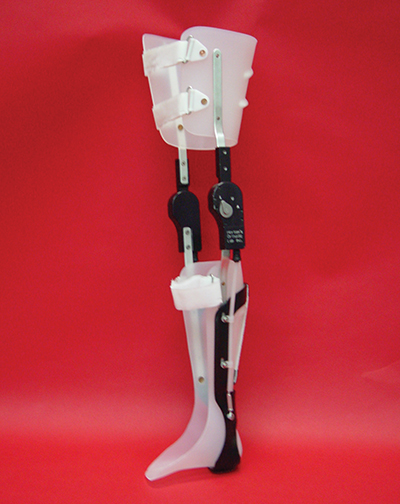
The brace may be used by a patient recovering from a knee injury when the knee cannot carry the full weight of the patient.
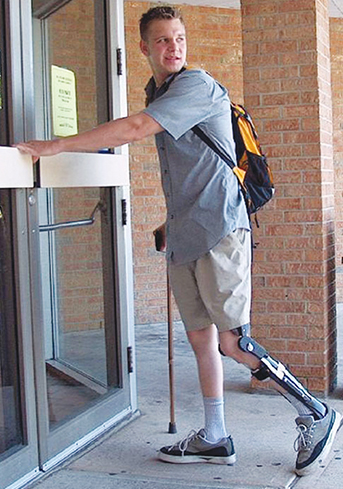
The selectively lockable knee brace allows the knee to function while supporting the leg.
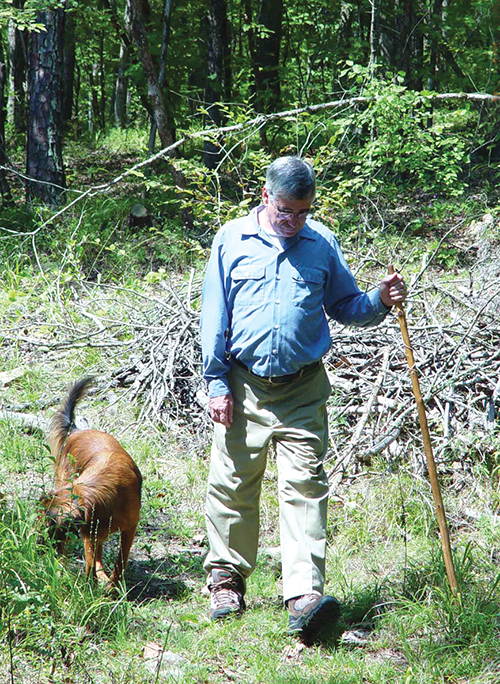
Designed for patients with weak or absent quadriceps and varying degrees of knee instability, this lightweight orthosis will allow patients to regain their mobility and assist them in a more energy-efficient ambulation.

The selectively lockable knee brace facilitates faster, less painful rehabilitation by allowing movement of the knee.











